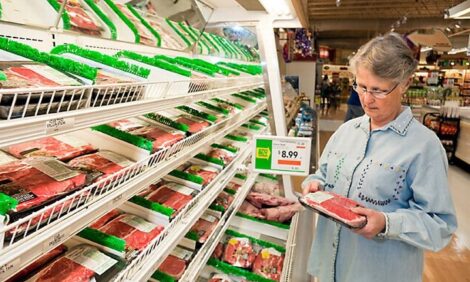



Govt, Private Sector Put Key Farm Products into Clusters
THAILAND - The Agriculture Ministry has identified 16 flagship products and grouped them into clusters with a view to further penetration of the regional market and cashing in on the upcoming Asean Economic Community (AEC).Agriculture Minister Theera Wongsamut said a meeting of the joint government-private sector subcommittee had held an in-depth discussion regarding agricultural products with high potential for further marketing within Asean, according to The Nation of Thailand.
The meeting was attended by representatives from associations covering 16 agricultural sectors: rice, sugar cane, tapioca, maize, pineapple, sweet corn, longan, oil palm, rubber trees, pigs, beef cattle, dairy cattle, chicken meat, layer hens, sea shrimp and tuna.
The aim of the discussion was to gather ideas from the private sector and to prepare the agricultural sector for the further opening up of Asean when the AEC comes into effect in 2015.
The private sector called for government’s support and cooperation in developing the strength of local agricultural businesses, so that they are more competitive and can maintain their leadership position in Asean.
Such cooperation should be extended to other member countries within Asean, in the areas of production, trading and investment, the representatives said.
Theera said that based on the discussion, seven clusters had been created and goals identified, as follows:
1. Rice, tapioca, sweet corn and tuna - sectors in which Thailand is a leading trading nation and should be the leader in the AEC single market.
The rice sector requires cooperation between the government and the private sector in developing a wider variety of native species, while jasmine rice species should have more value and uniqueness.
The government should import raw tapioca and tapioca chips from neighbouring countries for more processing and adding value to the Kingdom's production.
The government should promote increased local consumption and look for new potential markets for exporting sweet corn, while for tuna it should promote investment in processing facilities in neighbouring countries.
2. Rubber, sugar cane, pineapple, oil palm, dairy cattle and sea shrimp - products for which Thailand is a leading country for manufacturing, exporting and a potential trading centre in the AEC.
The government should have a policy to import concentrated liquid rubber from neighbouring countries for use in mid-stream industry for rubber production in Thailand. It should also urge all other Asean nations to become members of the International Rubber Consortium by having a management and administration centre in Thailand in order to provide a platform for discussion and negotiation on rubber and related issues and ensure maximum marketing efficiency.
Thailand should pioneer the formation of an Asean Palm Oil Federation and encourage all Asean member states to become members, reports The Nation.
3. Layer hens and pigs - these are sectors in which Thailand produces for local consumption.
4. Chicken meat - a sector in which Thailand should maintain its position as a trading country.
5. Longan - a sector in which the Kingdom should maintain its position as leading manufacturing and trading country.
6. Maize - where Thailand should maintain its position as a net importer. The private sector, however, suggested that local production should be promoted to replace imports, besides which Thai investors should |be encouraged to have production facilities in neighbouring countries and bring the output back to Thailand for further processing.
7. Beef cattle - where Thailand will step forward as the production base in the region. The government should create a five-year plan.








